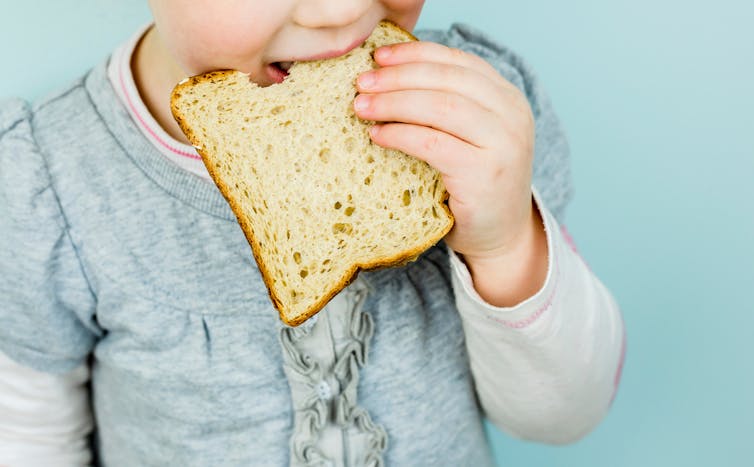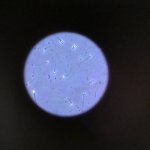Most of us are picky about some foods – and that’s normal – but for some people, pickiness can be dysfunctional. A little-known eating disorder – called avoidant restrictive food intake disorder (ARFID) – can have a severe, lifelong impact on eating habits.
This condition gained a lot of attention in 2019 after it emerged that a teenage boy in the UK suffered irreversible sight and hearing loss after years of only eating crisps, chips, and white bread. More than just a case of “picky eating”, the teen suffered from ARFID and stuck to his narrow diet because the texture of other foods was difficult for him to tolerate. While an extreme example, it nonetheless shows how harmful this eating disorder can be for those who suffer from it.
Avoidant restrictive food intake disorder is a relatively newly recognised condition, first recognised by the American Psychiatric Association in 2013. It’s thought to affect around 5-15% of children admitted to hospital with eating problems and less than 1% of adults.
ARFID is different from other restrictive eating disorders, such as anorexia and bulimia. People with the condition aren’t trying to control their weight. Rather, they have an inherent fear of food and the act of eating. While certain foods, sights, or smells may evoke disgust or fear in many of us, people with ARFID feel like this every day, about many of the food they encounter.
Many experience incredible anxiety towards foods they consider unsafe – causing diets to lack nutrition as a result. Many also have no motivation to change their eating habits as the psychological discomfort of trying to include “unsafe foods” is difficult to manage.
Given the newness of this disorder, much remains unknown about it. However, psychologists typically agree that someone with avoidant restrictive food intake disorder will have one or more of the following characteristics:
- An absence of hunger or apparent lack of interest in eating or food.
- Avoiding foods because of their sight, smell or taste.
- Worry from a parent or child about the limited number and types of food eaten.
- Not eating enough calories, protein, vitamins or minerals.
Diagnosing ARFID can be difficult, but typically, doctors will look at the amount and number of food types a person eats, how long avoidance of certain foods has been a problem, whether a person has lost weight or if their growth is stunted.
They will also look for signs of nutritional deficiencies – such as brittle nails and hair, skin changes, bleeding gums or lips, unexplained bruising, changes in eyesight, chronic fatigue and forgetfulness, and poor growth. They will also look at whether the condition causes distress or interferes with daily life.
Dangers of ‘picky eating’
Most parents of toddlers will probably say their child is a “picky eater”. This is a normal stage of child development, and most children will grow out of it by four to six years of age. But ARFID is distinct, and children often develop it after previous negative experiences with types of food that may have caused them to gag or retch as young children. Fear of choking or vomiting, aversion to certain tastes or textures, or a lack of drive to eat are all thought to be causes. Adults with ARFID can often relate their feelings about food to experiences as a young child and experience the same avoidant feelings as children.

FotoHelin/ Shutterstock
Children who are picky eaters will not usually lose weight or rely on nutritional drinks or feeding tubes. They will also not have fear or phobias around vomiting, choking or limit their food intake to such an extent they lose weight and develop signs of vitamin and mineral deficiencies.
And unlike your average picky eater, people with ARFID may only eat less than 20 different types of food – typically “white” or “beige” foods, such as bread, boiled rice and crackers. This can lead to weight loss or growth faltering in children, deterioration of psychological function, and nutritional deficiencies.
A recent systematic review of case reviews of patients with both ARFID and autism, found that almost 70% of those with ARFID had scurvy (vitamin C deficiency), while 17% had eye disorders as a result of vitamin A deficiency. Vitamin D, B12, and thiamine deficiencies were also reported. These vitamins and minerals are essential for helping the body function properly. It’s recommended that those with suspected ARFID be referred to specialist care to ensure they have help to manage their condition.
Eating is an important social activity for many worldwide. But avoidant restrictive food intake disorder can leave many feeling isolated as a result. Given this is a relatively new disorder, it will be important for research to continue working to understand why the condition develops, and how to better help patients recover.
![]()
Luise Marino does not work for, consult, own shares in or receive funding from any company or organisation that would benefit from this article, and has disclosed no relevant affiliations beyond their academic appointment.









